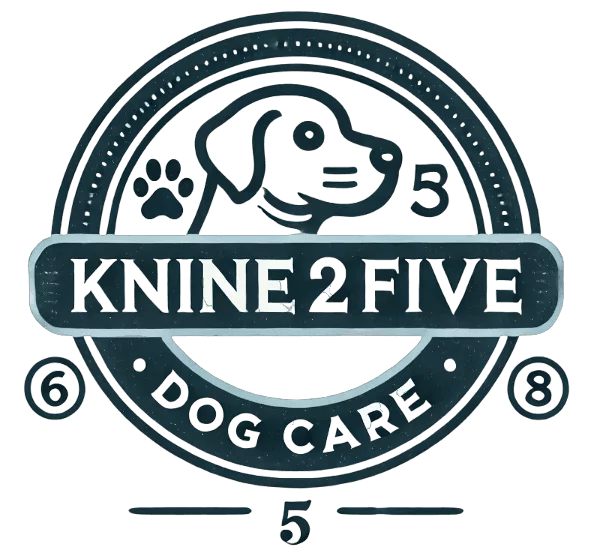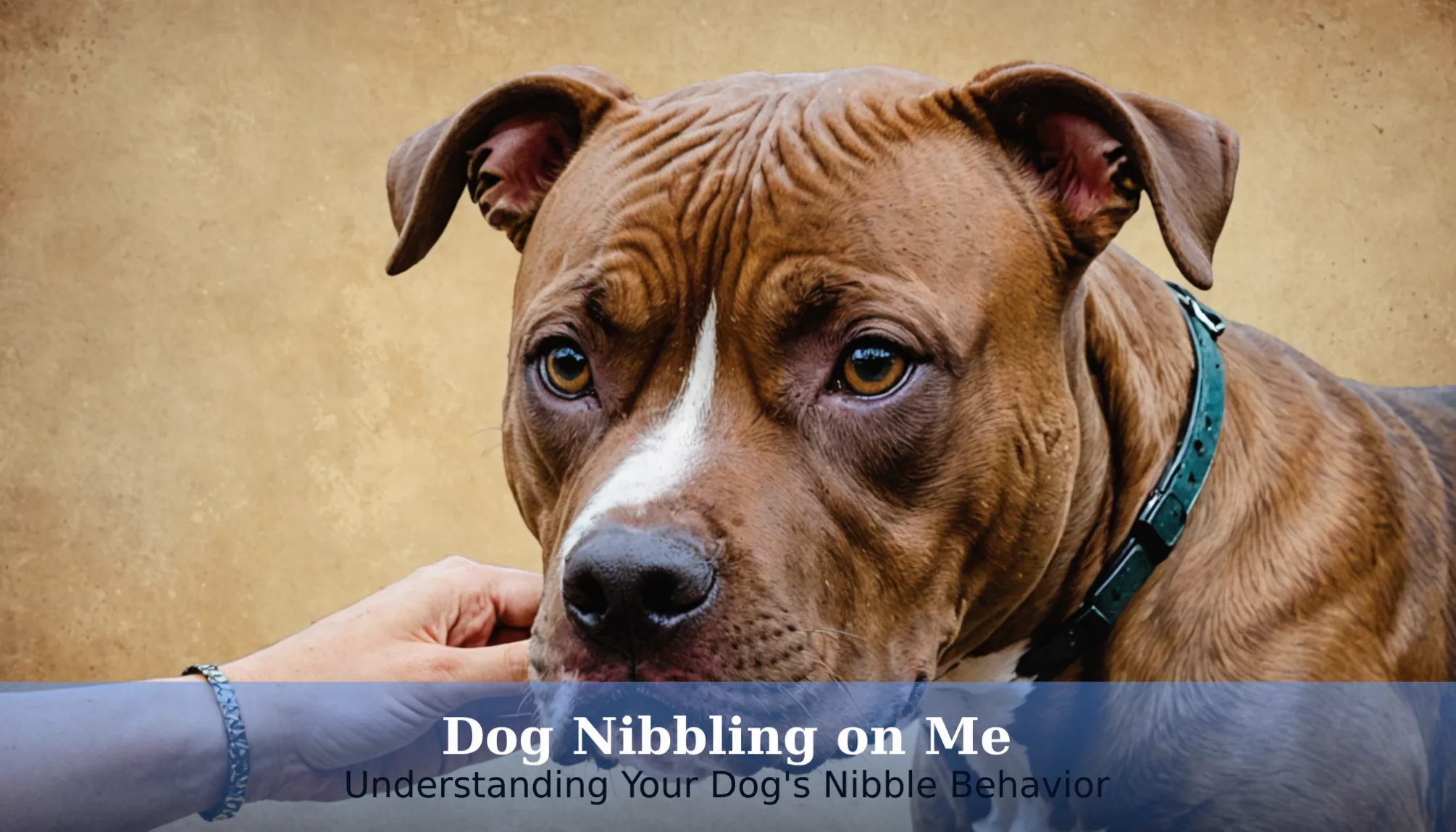Have you ever felt your furry friend gently nibbling on you? The dog nibbling on me is more than just a quirky habit; it’s a way for your pup to show affection, play, and communicate! Understanding this behavior is super important because knowing why your dog does this can help strengthen your bond and keep both you and your pet happy.
If you’ve been puzzled by your pooch’s playful nibbles, you’re in the right place! In this article, we’ll explore what your dog might be trying to say, the different reasons behind this nibbling behavior, and when it might be time to redirect that enthusiasm. Plus, we’ll share tips on how to manage excessive nibbling to ensure it stays a cute quirk rather than a bothersome habit. So, let’s dive in and uncover the fun world of dog nibbling!
Why Is Your Dog Nibbling on You?
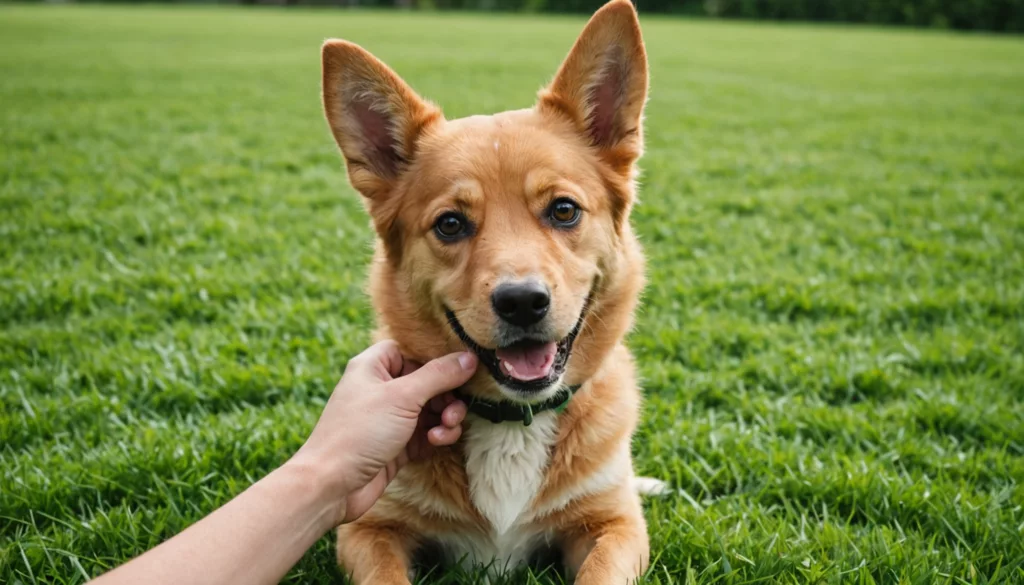
Understanding Your Dog’s Nibble Behavior
Dogs nibble as a way to communicate and socialize. This behavior comes from their evolutionary past where they learned to read human signals. Nibbling helps them show their feelings and needs, making it a natural part of their interaction with people. Dogs use different nibbling styles depending on their mood. A gentle nibble shows affection, while an excited nibble means playfulness. Recognizing these can help you respond better.
What the Dog May Be Trying to Communicate
Nibbling can mean different things. Here are some common messages dogs might be sending:
- Affection: Gentle nibbling is a sign of love and bonding, like how they groom each other.
- Playfulness: Dogs often nibble during play, showing they want to have fun.
- Attention-Seeking: If your dog feels ignored, they might nibble to get your focus.
Understanding these signals helps you connect better with your dog.
Common Reasons for Dog Nibbling
Dogs nibble for various reasons, such as:
- Affection: They show love by gently nibbling. It’s like how they groom each other.
- Playfulness: Nibbling happens often during playtime, especially with puppies learning to interact.
- Attention-Seeking: Dogs nibble to get attention if they feel left out.
- Teething: Puppies nibble to ease teething discomfort and explore their world.
- Exploration: Dogs use their mouths to learn about their surroundings.
By knowing these reasons, you can address your dog’s needs and strengthen your bond.
Additional Insights
Understanding nibbling improves communication and strengthens relationships with dogs. Knowing your dog’s body language helps create a nurturing environment. When you understand these behaviors, you can help your dog feel happier and more adjusted.
References
Understanding Dog Nibbling Through the Ages
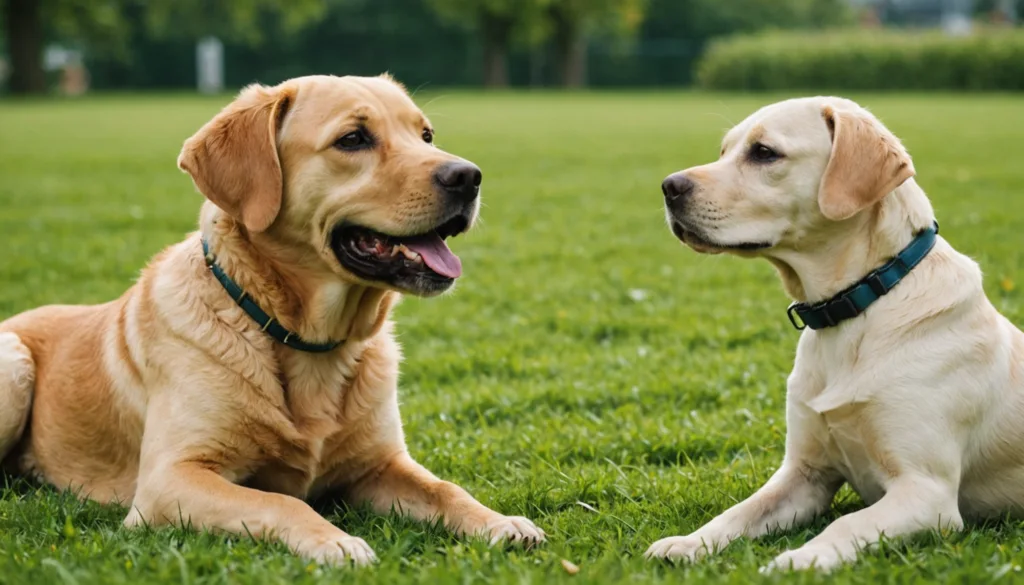
Evolution of Nibbling in Dogs
Nibbling in dogs has deep evolutionary roots. Dogs, or Canis familiaris, evolved from wolves about 27,000 to 40,000 years ago. As they became domesticated, their social behaviors changed to fit human environments. Nibbling is one of these behaviors, starting from when puppies nibble on their littermates. This helps them learn about the world and communicate.
As dogs adapted to living with humans, nibbling took on new meanings. It can show affection or a need for attention. This behavior echoes their past, where pack members bonded through touch. Dogs use nibbling, much like barking or tail wagging, to express themselves. It often means they feel playful, comfortable, or affectionate.
Nibbling Patterns Across Breeds
Breeds nibble differently based on their personality and training. For example, playful breeds like Beagles and Golden Retrievers may nibble more to engage in fun. This shows their joyful nature and desire to interact.
In contrast, more reserved breeds like Rottweilers nibble less. They might nibble to seek affection rather than play. Knowing these patterns helps owners understand their dog’s behavior better. Additionally, recognizing these behavioral tendencies can aid in addressing potential concerns that arise with different breeds. For instance, when examining pomeranian behavior issues explained, it’s vital to note that these small dogs often exhibit heightened anxiety or behavioral quirks that may stem from their lively nature. By understanding the unique traits of each breed, owners can foster a more harmonious relationship with their pets, ensuring their needs are met in a way that encourages positive interactions.
| Dog Breed | Nibbling Frequency | Communication Style |
|---|---|---|
| Labrador Retriever | High | Playful and affectionate |
| Chihuahua | Moderate | Attention-seeking |
| German Shepherd | Low | Protective, affectionate |
| Golden Retriever | High | Playful and social |
| Rottweiler | Low | Affectionate, reserved |
Sources:
What Does It Mean When Your Dog Nibbles?
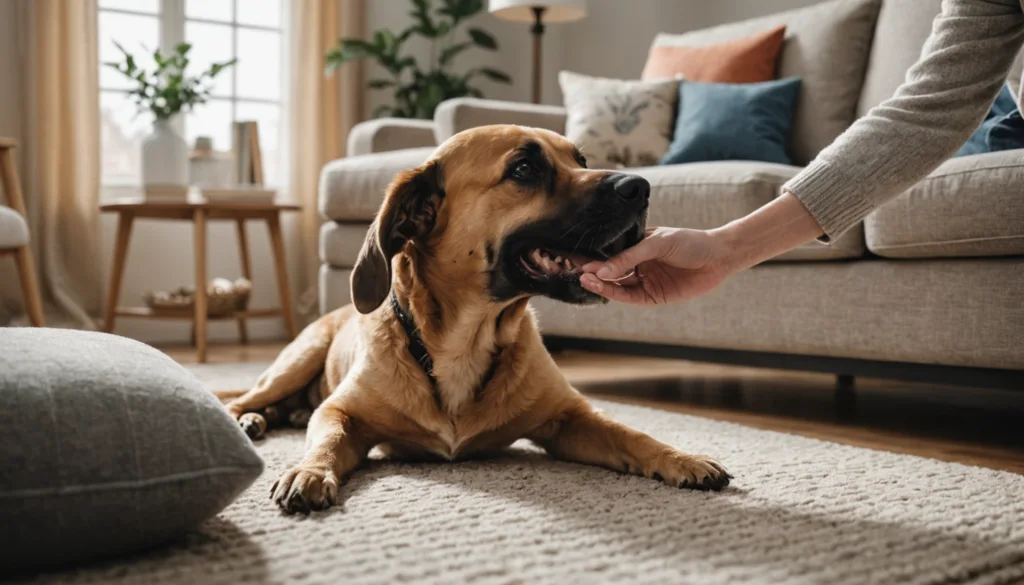
Dogs nibble for many reasons. Understanding this behavior helps owners connect better with their furry friends. Nibbling can show affection, communicate, or invite play. Let’s explore the types of dog nibbling, its affectionate nature, and its playful role.
Exploring the Different Types of Dog Nibbles
Dogs use different types of nibbles based on their mood and intent. Here’s what they might do:
- Gentle Mouthing: This soft nibbling often happens during play or when a dog feels excited. Puppies use it to explore their world.
- Affectionate Nibbles: These are light and tender. Adult dogs nibble on their owners to show love, similar to how puppies nibble on their mothers.
- Playful Nibbles: Dogs nibble during playtime. This invites interaction and signals readiness for fun.
Nibbling is a key way dogs communicate. It can express feelings and desires, making it an important part of their behavior. According to experts, nibbling often indicates a request for attention or play.
How Dog Nibbles Reflect Affection
Nibbling often shows a dog’s affection for its owner. Here’s how this behavior strengthens bonds:
- Comfort and Trust: A dog that nibbles gently feels safe. Like puppies nibbling on mothers, adult dogs nibble to express trust and affection.
- Strengthening Bonds: Nibbling enhances the connection between a dog and its owner. This friendly gesture deepens their relationship.
- Social Behavior: Dogs also nibble on other dogs or animals. This action reinforces social bonds and shows playfulness.
Understanding a dog’s affectionate nibbles helps owners appreciate their furry companions’ love and trust.
The Role of Playfulness in Dog Nibbles
Playfulness is a big reason dogs nibble. Here’s how it connects to play:
- Socialization: Dogs nibble while playing with others. This helps them learn social cues and boundaries.
- Inviting Play: A nibbling dog may invite owners or other dogs to engage in fun activities, sparking physical activity and bonding.
- Learning Boundaries: Nibbling during play teaches dogs about bite inhibition and appropriate behavior.
Recognizing the playful aspect of nibbling helps owners engage with their dogs and meet their needs for fun and interaction.
Signs Your Dog Might Be Nibbling for Attention
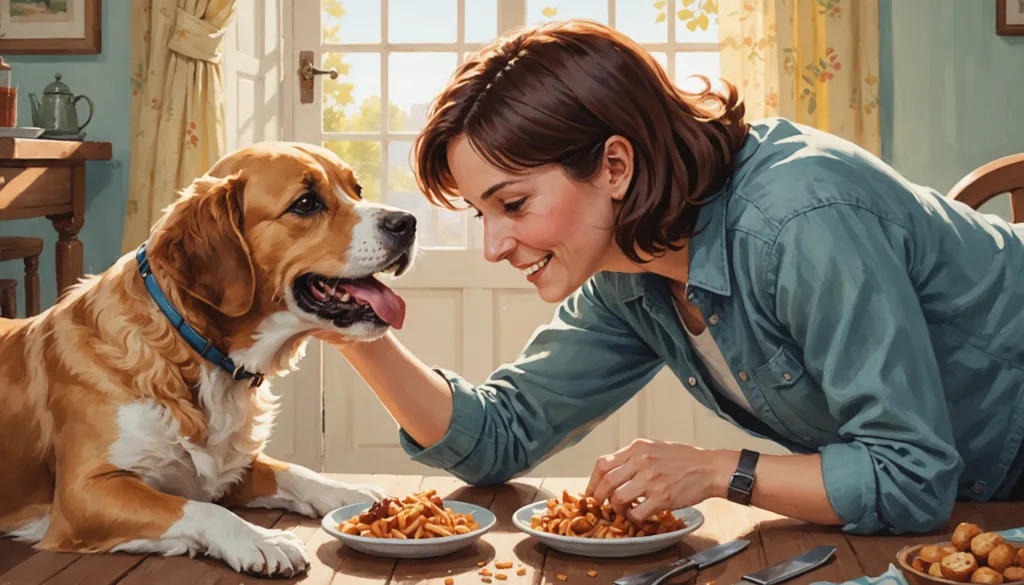
Recognizing Attention-Seeking Nibbles
Dogs often nibble to get your attention. This behavior shows when a dog feels ignored or wants to interact, similar to barking or pawing. For instance, if a dog lies on the floor while you are busy, it may start nibbling on your arm or leg. This gentle nibbling is like saying, “Notice me!”
How to Respond When Your Dog Nibbles
When your dog nibbles, consider the situation. If it’s playful, respond positively. For example, if your pup nibbles gently and wags its tail, you can pet or play with it. This teaches your dog that gentle nibbling can get attention. But if the nibbling is too frequent or bothersome, redirect your dog. Offer a toy or engage it in another activity to show there are other ways to get noticed.
Training Your Dog to Nibble Less
Training helps reduce nibbling. Here are some effective strategies:
- Positive Reinforcement: Reward your dog when it interacts without nibbling. For example, give treats or praise when it plays nicely with a toy. This way, your dog learns that good behavior gets rewards.
- Redirecting Behavior: Offer a chew toy to satisfy the nibble urge without involving you. If your dog reaches for your hand, redirect it to the toy.
- Setting Boundaries: Teach commands like “no” or “leave it” to reduce nibbling. When your dog hears these commands, it learns to stop nibbling on you.
References:
How to Make Your Dog Stop Nibbling Excessively
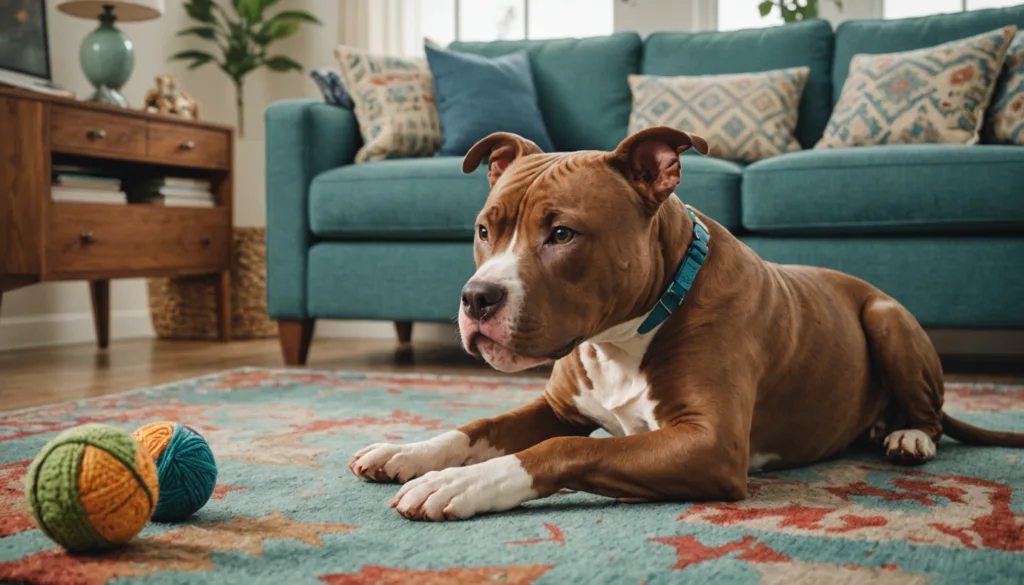
Techniques to Discourage Unwanted Nibbling
Dogs nibble for many reasons, like excitement or affection. But too much nibbling can be a problem. Here are ways to help stop it:
- Redirect Attention: When a dog nibbles, offer a toy or chew item. This teaches them that it’s okay to nibble on objects, not people. For example, if a pup nibbles your hand, give them a rubber toy to shift focus.
- Set Boundaries: Say “no” when your dog nibbles and stop giving attention. This shows that nibbling is not okay. If they nibble during play, pause the game and turn away to set limits.
- Provide Alternatives: Offer chew toys or play activities to satisfy their nibbling needs. Interactive toys or fetch games can help. These proper outlets keep them from nibbling on people.
Positive Reinforcement to Modify Behavior
Positive reinforcement helps change your dog’s behavior by rewarding good actions. Here’s how to use it to reduce nibbling:
- Reward Good Behavior: Give treats or praise when your dog plays without nibbling. This links good behavior with rewards. For example, if they chew a toy instead of you, reward them with a treat.
- Use Praise and Affection: Verbal praise, petting, or extra playtime work as rewards. If they play gently, saying “good dog” and petting them encourages more of that behavior.
- Create a Reward System: Use a simple chart to track positive behavior. Each time they choose an appropriate object to nibble, they earn a star. After a few stars, they get a special treat.
When to Seek Professional Help for Nibbling
Sometimes, dogs keep nibbling despite these techniques. Here are signs you might need a professional:
- Excessive Nibbling: If nibbling is constant and uncontrollable, a dog trainer or behaviorist can help with tailored strategies.
- Aggressive Nibbling: Seek help if nibbling becomes aggressive or leads to biting. This needs professional attention to prevent serious behaviors.
- Underlying Health Concerns: Nibbling can signal stress or health issues. If paired with other changes, like eating habits, visit a veterinarian. They can check for medical causes.
For more information, see the following sources:
Health Concerns Related to Dog Nibbling
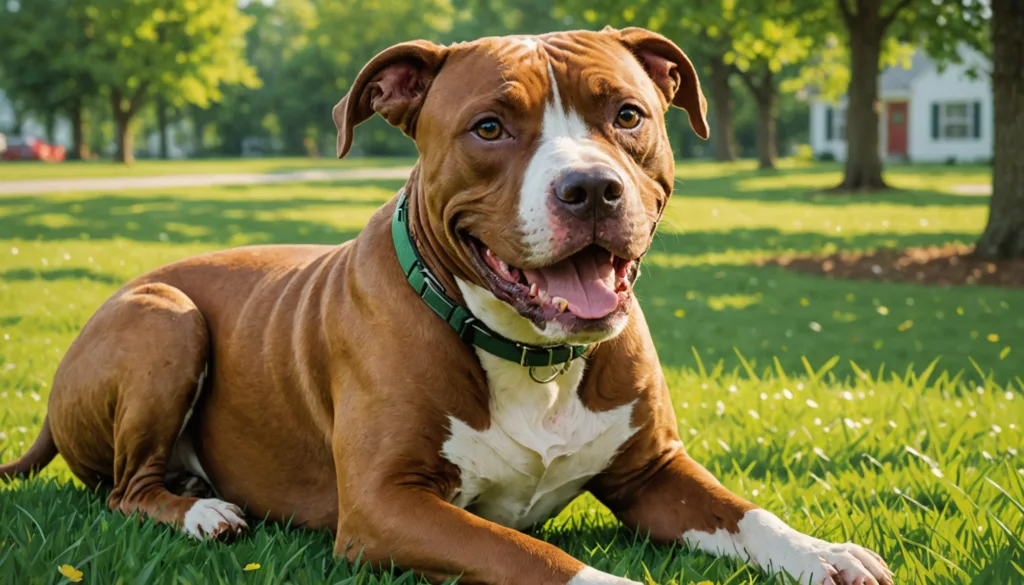
Dogs nibbling on humans can indicate emotional or health issues. Understanding these behaviors helps owners support their pets better. Let’s explore how stress and health problems might cause nibbling and when to see a veterinarian.
Is Your Dog Nibbling Due to Stress?
Dogs may nibble when stressed. This behavior helps them cope, like how people might fidget nervously. Watch for stress signs like excessive nibbling, pacing, or hiding. If a dog nibbles during thunderstorms or around new people, it might be stressed. Recognizing stress helps address your pet’s emotional well-being.
Potential Health Issues Behind Nibbling
Nibbling can signal health problems. For example, dental pain or stomach issues can cause a dog to nibble for relief. Regular vet visits are crucial for catching these problems early. If nibbling persists, it’s a sign that something might be wrong, and a vet should check it out.
Consulting with Your Vet About Nibbling
If nibbling is excessive, a vet can help. They will check for health issues and suggest behavior training. During the visit, discuss your dog’s nibbling habits and any changes in behavior. This helps the vet decide if nibbling is due to stress or health issues. Addressing these concerns leads to a happier, healthier dog. (VetStreet)
Conclusion
Understanding why your dog is nibbling can help you connect with your furry friend even more! Remember, nibbling can be a way for your pup to show affection or communicate their needs. It’s important to recognize the different types of nibbles and respond appropriately to keep those gentle nibbles from turning into unwanted behaviors.
If your dog’s nibbling becomes excessive, don’t hesitate to use positive reinforcement to redirect this natural behavior. Consulting a veterinarian or a qualified dog behaviorist is also a great step if you’re concerned about your pup’s nibbling habits.
Keep exploring the wonderful world of dog behavior, and soon you’ll be an expert in understanding your dog’s unique ways of saying, “I love you!”
FAQs
1. Why Does My Dog Nibble on Me?
Dogs often nibble to show affection, play, or get your attention. This is a natural behavior that starts in puppies and can continue as they grow up. Recognizing why your dog is nibbling helps you manage it effectively.
2. What Are the Common Reasons for Dog Nibbling?
- Affection: Dogs nibble to express love and bond with you.
- Playfulness: It’s often part of their playful interactions.
- Attention-Seeking: Nibbling may be a way to engage with their owner.
3. How Can You Distinguish Between Affectionate and Attention-Seeking Nibbles?
Affectionate nibbles are usually gentle and come with relaxed body language. Attention-seeking nibbles might be more persistent and involve excited actions like tail wagging or jumping.
4. Is Nibbling a Sign of Stress or Anxiety?
Yes, nibbling can sometimes show stress or anxiety. If your dog nibbles excessively or shows stress signs, they might need more comfort or reassurance.
5. What Can You Do to Reduce Excessive Nibbling?
To reduce unwanted nibbling, try these steps:
- Redirect Attention: Give toys or treats to keep your dog busy.
- Teach Commands: Use commands like “leave it” to stop nibbling.
- Positive Reinforcement: Reward your dog when they don’t nibble.
